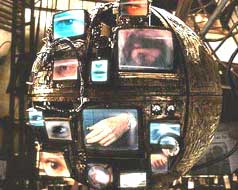
Objectives:
- to use the science fiction genre to teach US history.
- to use the science fiction genre to explore alternate visions of the future.
- to reveal how visions of the future can reflect present-day fears.
-
to explore popular film as a means of cultural production- how films reflect
the period in history that they emerge from, and how they are manufactured
(reveal the artifice).
- to teach critical reflection through film analysis by way of an accessible medium.
-
to reveal filmmaking as an art form unto itself, how art is a means to
communicate ideas, and how popular filmmakers create social commentary
(art cannot be made in a vacuum).
- to integrate personal responses into formal analysis.
- to expose students to the variety of creative careers within filmmaking.
- to teach Media Literacy by encouraging and providing tools for active, rather than passive, consumption of media
- depending on class time, try to show about 25 minutes per day.
- have new board notes and required journal entries daily.
- review what was watched the previous day, as well as anecdotes and board notes, before viewing more.
It is very important that the film be watched in segments that can be discussed before more of the film is watched. This is a method that has been extremely successful for me: it allows you to model for the students how they can be watching the film in terms of critical thinking skills, what sort of questions they can be asking in terms of exploring motivations and character development, and allows you to revisit the narrative of the film so that everyone is on the same page.
The first thing students do as they enter the room on the second day of viewing, is to copy down the new board notes. These consist of "themes", "vocabulary", information about historical events of the time the film was made, and the names of the main characters. This is important journal-writing for reflection and allows the opportunity to build upon the review and reflection process, encouraging students to add their own notations and opinions.
Then they need to write in their journal their version of the narrative up to that point. As opposed to taking away from the "entertainment" value of a film, this process actually has turned out to build keen excitement and suspense in my students as they revisit the previously viewed segment and await the next bit of the film to view.
Give students enough time for that, then lead a discussion by asking someone to describe what's happened so far. Allow others to interject plot points. As points of importance arise, it is your opportunity to stress certain themes and metaphors, saying things like, "notice that.....", or "what do you think that means...". This is also the time to connect what students remember to the themes you've written on the board. Drive the discussion with leading questions and encourage new insights to arise. Tie items in the film to the real-life historical events you've mentioned on the board.
Excitement is now built for further viewing, you're modelling how to watch a film critically, and you're striking memory chords so that the film will continue to make sense after a delay in viewing.
- Use a mixture of worksheets, quizes, comparison essays, and daily journal entries.
* * * * * * * * * * * * * * * * * * * * * * * * * * * * * * * * * * * * * * * * * * * * * * * * * * * * * * * * * * * * * * * * * * * * * * * * * *
"In my practice, I've seen how people have allowed their humanity to drainaway. Only it happened slowly instead of all at once. They didn't seem to mind...All of us- a little bit -we harden our hearts, grow callous. Only when we have tofight to stay human do we realize how precious it is to us, how dear".
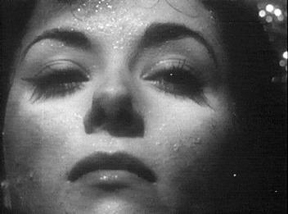
Relevent 1950's History:
-
McCarthyism
- The Red Scare
- Social conformity and the myth of the nuclear family
Themes in film:
-
Mass hysteria, paranoia as contagious
- People not being what they appear to be appearances being deceiving
- Fear of being invaded from within and without one's own community
- Smalltown USA ideal of all-white/homogenous/familial
- Definition of what's "human" being the ability to feel and
display emotions
Filmmaking techniques used for effect:
-
Use of shadow
- Confined space
- Extreme close-ups/reaction shots
- not actually showing the aliens as anything but human in appearance
![]()
"You who
are reading me now are a different breed... I hope a better one. I leave
the 20thcentury with no regrets... the scene from out here...everything
seems different. Time
bends, space is boundless. It squashes a man's ego. I feel lonely....
tell me, though...does Man, that marvel of the universe, that glorious
paradox who sent me to the stars, still make war against his brother?...keep
his neighbor's children starving?"
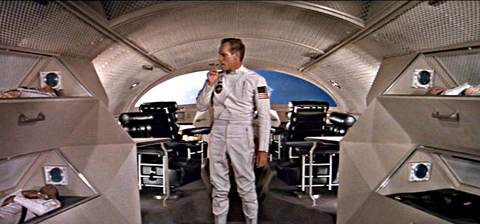
Relevent 1960's History:
-
Civil unrest/protests/riots
- Vietnam War
- Youth Generation vs. Authority
- Racism/Civil Rights Movement
- The Space Race
Themes in film:
-
Disillusionment
- Science/Empiricism vs. Religion/Faith
- Equality vs. discrimination
click here for POTApes notes.
![]()
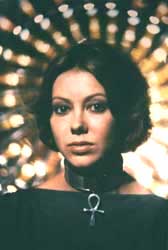

1976, Michael Anderson
Relevent 1970's History:
-
Hedonism/Excess
- Nuclear Proliferation
- Ecology Movement/Environmental Disaster
- Watergate and impeachment of Nixon
- Losing the Vietnam War
- Overpopulation and hunger
Themes in film:
-
Faith/"Renewal"/"Sanctuary"
- Youth(selfishness) vs. Old Age(wisdom)
- Tyranny of The Machine
- Fear of change and the unkown
- The American government in ruins
- Subversion, tyranny and the will to live
- Ankh= life (from ancient Egypt)
![]()
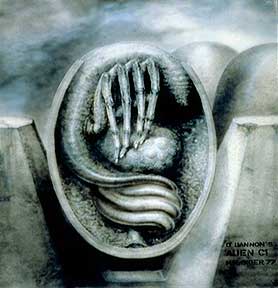

1979, Ridley Scott
Relevent History: the transition from the 1970's to 1980's:
- Bigger corporations
- The Arms Race
- Growth of the Military-Industrial Complex
Themes in film:
- Technology vs. Biology
-Space as both exterior and interior(psychological)
- Horror film as genre
- Strong woman as lone survivor
- Paranoia
- Tyranny of the corporation
Filmmaking techniques to create suspense:
- Realism and atmosphere
- Use of audio (ie: breathing, heart-beats.)
- Not fully showing monster until very end
- Bloodless killing
- Tension through characters compulsive activities (ie: smoking, pacing).
- Claustrophobic spaces
- Visceral images/authentic organic material
![]()
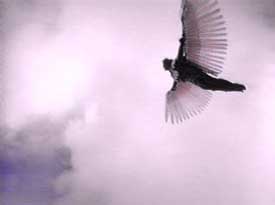
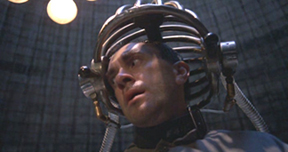
1985, Terry Gilliam
Relevent History:
- Terrorism
- Chaos Theory
- War
Themes in film:
- Inhumanity of beaurocracy
- Memory, nonlinearity
- Technocracy
- Fantasy vs. Reality, escapism
- Complacency
- Totalitarianism
- Postmodernism: creating a future from parts of the past; a simultaneous
past and present.
![]()
1995, Terry Gilliam
Relevent History:
- BioTerrorism
- Ecoterrorism
- Animal Rights
- AIDS
Themes in film:
- Time Travel
- Fantasy vs. Reality, escapism
- Memory, nonlinearity
- Complacency
- Totalitarianism
- Postmodernism: creating a future from parts of the past for lack of
a clear vision.
